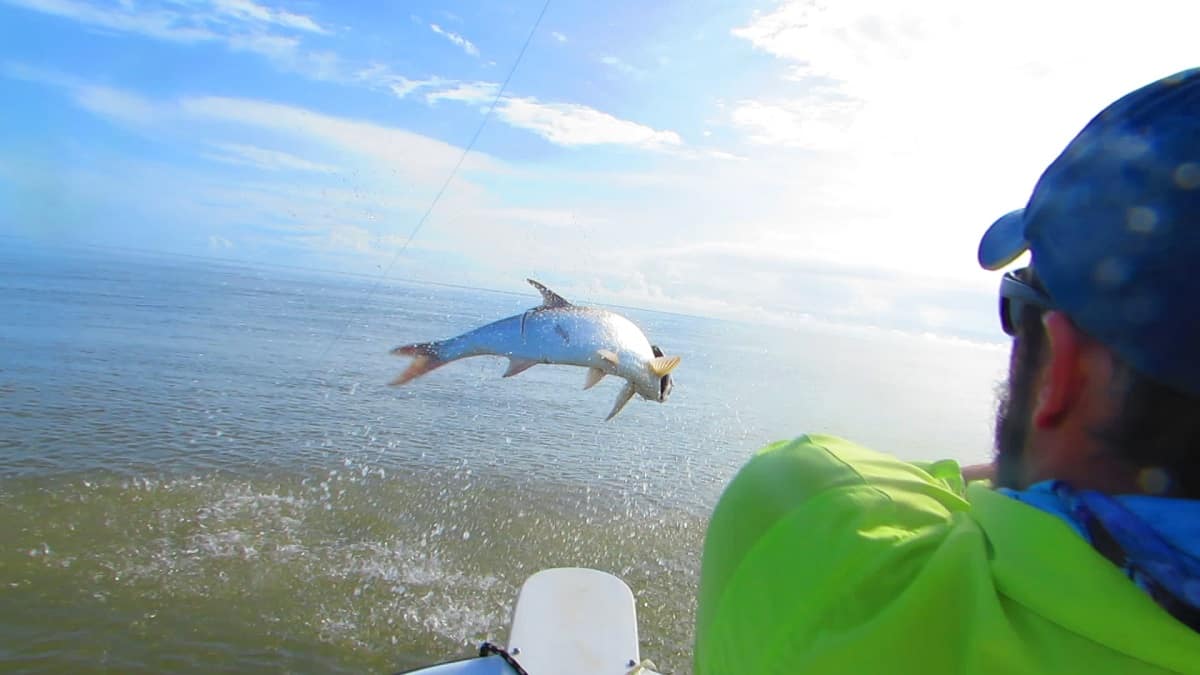It was the night before I landed my first tarpon.
Daniel Herrera, my friend and Parismina fishing guide, sat forward in his chair at the Cariblanco, a small, open-air restaurant just a hundred or so meters from the Caribbean Sea, and made a promise that would make most guides quiver.
“Tomorrow is the big day, man,” he said. “You’re going to get your tarpon.”
He had good reason to be optimistic; the fishing the past few days had been outstanding.
The tarpon were everywhere, and the conditions perfect. From our seats, we could hear the Caribbean pulsing softly on Parismina’s volcanic, black-sand beach, barely a whisper on the dark horizon. Palm fronds, usually anxious and rustling, were quiet. Stars twinkled as bright as city lights in the sky above us.
We agreed to meet the next morning early, around 5:30 a.m., to be on the water by first light.
“The key to fighting a tarpon is to turn his head when he gets close to the boat, to throw him off balance. I want you to dream about that tonight,” Herrera said as he walked off into the dark Caribbean night.
“Sure thing,” I said, only half paying attention. I figured I would hook one first, then worry about landing him.
A Sea of Tarpon
The next morning, everything was just as Herrera had promised.
The river mouth, where ocean swells collide against the chocolate-brown jungle waters and can force frightening waves skyward, snaked out to sea with barely a riffle.
Almost immediately we saw the silver flashes of tarpon, rolling and splashing near the “magic line” where the muddy water meets the emerald Caribbean. Their huge, silvery scales glistened in the morning sun.
Everywhere we looked there were schools of sardines spraying like silver splinters, ambushed from below by schools of feeding tarpon.
“This is amazing,” I said.
But Herrera, who’d moved to this small town on the northern Caribbean coast two years ago to see this sort of thing every day, already knew that.
He grinned, nodding.
It wasn’t long before I hooked my first tarpon, just as Herrera had promised.
It felt as if I’d accidentally caught my line on a train running tracks along the ocean floor. The reel screamed, its yellow braided line cutting the muddy surface water like a knife.
“This is a big one. Don’t forget to turn his head when you see him,” Herrera reminded me again. “Otherwise, you’ll be fighting him forever.”
I was fishing with a rod as big around as my leg, 30-pound test and a reel that looked as if it could handle a small whale.
I planned to make short work of this fish.
“No problem,” I said.
On the Clock
Thirty minutes later, sweat and sunscreen started to gather in the corners of my eyes, my arms ached and my fingers, wrapped in a death grip around the rod, started to seize up.
Herrera was still smiling.
“Forty minutes, man,” he said.
The tarpon surfaced. I started to turn his head as Herrera had urged, but the tarpon, huge, with broad shoulders, gulped air and sounded again.
“There he goes again,” Herrera said. I groaned. The tarpon went straight into shore. I looked up and saw Turrialba Volcano on the landward horizon, a plume of steam drifting like chimney smoke from its peak.
Then the tarpon surfaced again, this time farther out.
“Fifty minutes, man,” Herrera said, looking at his watch as I finally began to catch up with the fish again. “You’ve got to land him in under an hour.”
He was right. I was getting tired, my arms sore.
The sun, now higher in the sky, was beating down on me. I could feel the back of my neck sizzling. I could barely keep the rod off the gunwale of Herrera’s panga.
“Sixty minutes, man,” he said.
I looked back at him again, and this time he was putting on his gloves.
It was a good sign, I figured. Herrera, a Colombian who once ran a fly-fishing shop and school in Bogota and had led scuba and fishing trips from Cuba to the Amazon, knew a thing or two about how and when to land a fish.
The tarpon surfaced again. This time I took Herrera’s advice seriously. I turned the fish’s head once, then back again, keeping him on the surface.
A few minutes later he was alongside the boat, lying with his broad silver belly to the side.
Herrera reached over the gunwale and with both hands grabbed the fish’s lip. It shook its head again, throwing Herrera against the side of the boat. But he didn’t let go.
It was official: my first tarpon.
Herrera looked at his watch.
“Only 72 minutes,” he said, laughing.
Catching Tarpon in Costa Rica
What: Big tarpon in huge numbers, averaging 75 to 125 pounds and sometimes running as large as 200 pounds.
Where: Parismina, on the northern Caribbean coast. The town, north and east of Siquirres, is accessible only by boat. Guides and lodges can also arrange transportation.
When: Tarpon season is year-round in Parismina, which means anytime the boats can navigate the river mouth. Your best bet for calm weather is from August to October. Even on rough days, clients fish inside the river mouth for jungle species such as machaca, mojarra, snook, guapote and baby (10- to 40-pound) tarpon.
How: Big tarpon demand serious tackle and well-tied knots. If you’ve got heavy gear and can spin a Bimini and whip up an Albright, then by all means bring your own gear. Fly fishermen should consider 12- to 14-weight rods, and shooting lines of 475 grains or heavier, with at least 200 yards of 30-pound backing. Conventional tackle fishermen should bring heavy bait reels spooled with 17- to 20-pound test line, sturdy 6.5- to 7-foot rods and leaders testing 80 or 100 pounds.






